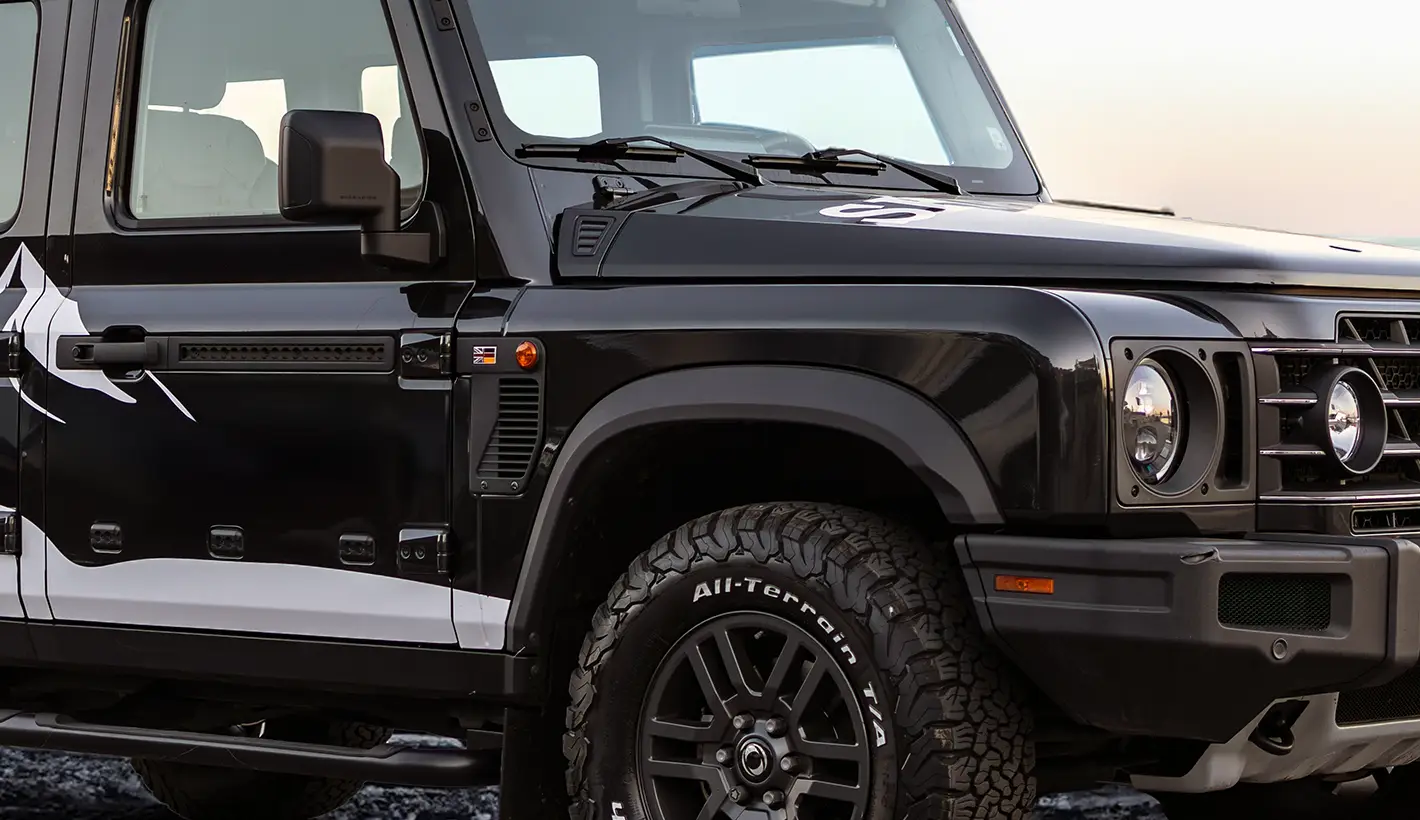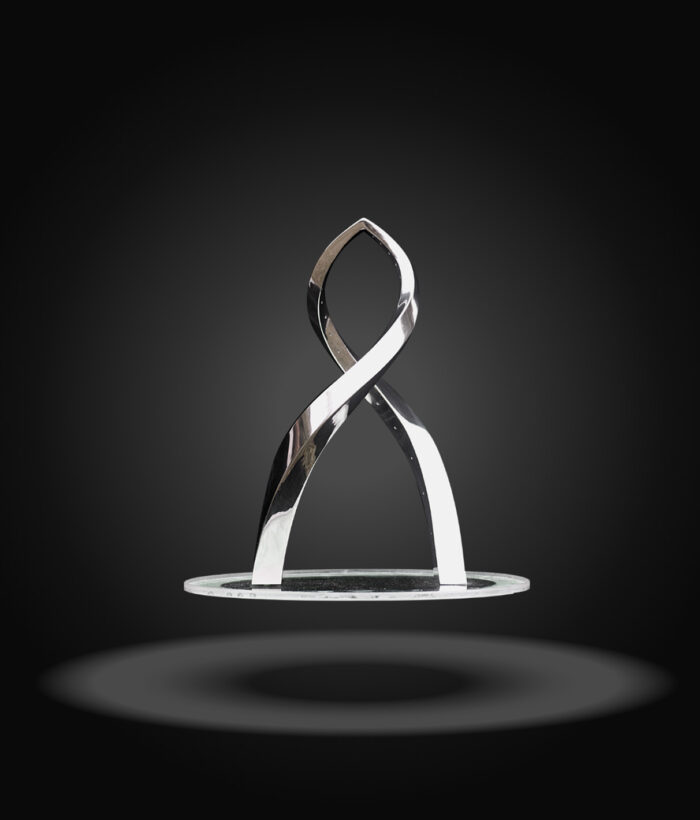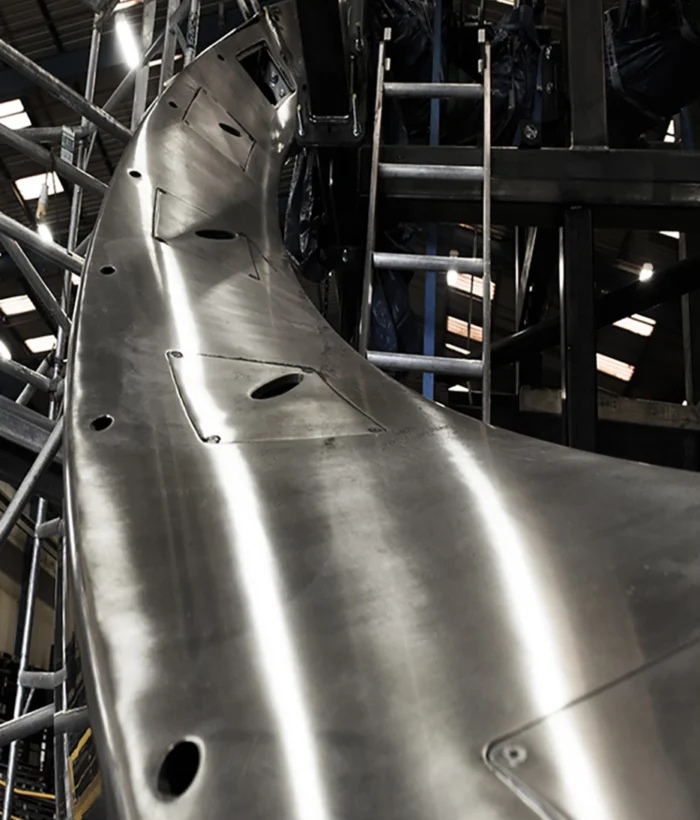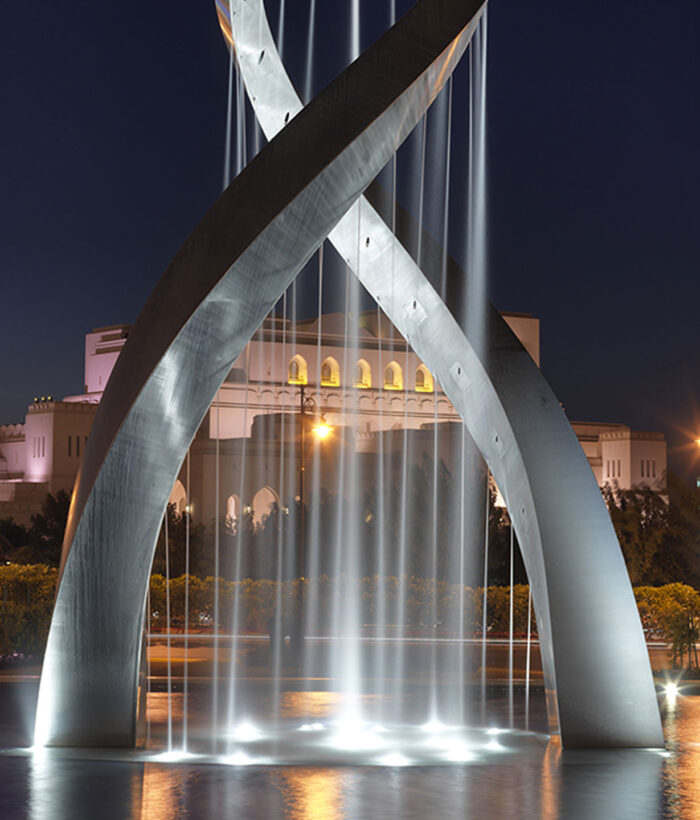4×4 Air Intake System
Feasibility for injection moulding


His small-scale 3D model and proposal outlined a concept for an impressive 40-foot high sculpture set against a backdrop of a 200-foot wide pool, comprising two entwined stainless-steel tusks complemented by 69 illuminated water jets. The goal was clear: to design, manufacture, and install this breathtaking artwork that was destined to grace the capital city of Oman, Muscat.

To minimise the risk of laser-cutting errors, flat profiles were created from the complex curved surfaces of the sculpture. Understanding that the hatches needed to remain securely attached as the surface curved, a tagging system was integrated that allowed each hatch to be fixed to the surface as a flat sheet.
To further assist the manufacturing team, precise tolerance figures for shrinkage and stretch were provided, ensuring that when the flat profiles were transformed into curves, they would fit together seamlessly.

To facilitate this, an assembly and orientation jig was designed and built, enabling manufacturers to align and secure each piece with utmost accuracy.
To streamline the assembly process, each component was tagged using our proprietary software. This innovative system ensured that parts could only fit together in the correct orientation, allowing for quick and efficient assembly while maintaining the sculpture’s structural integrity.

These lights would create a captivating, colourful display that accentuated the sculpture’s elegance and dynamism.
To ensure the lighting design perfectly complemented the sculpture, a 3D visualisation of the installation was created. This allowed the lighting designer to experiment with various placements, beam angles, focal points, and intensities, ultimately enhancing the sculpture’s aesthetic impact.
“Generative Parametric surpassed my every ambition for this project - from rapid prototyping to the smart solutions used to manfacture this project, they blew us away at every stage.